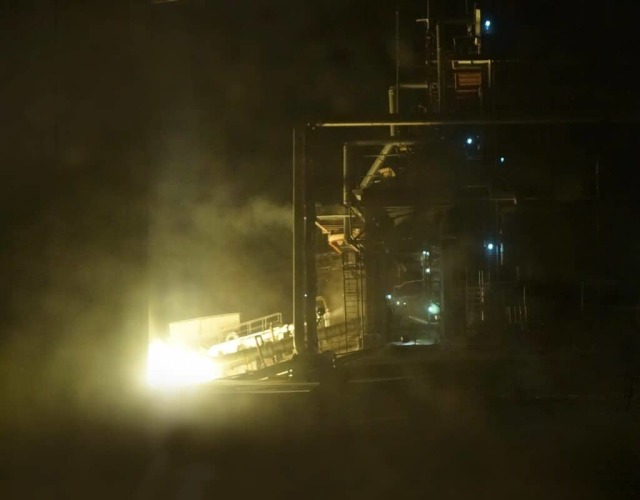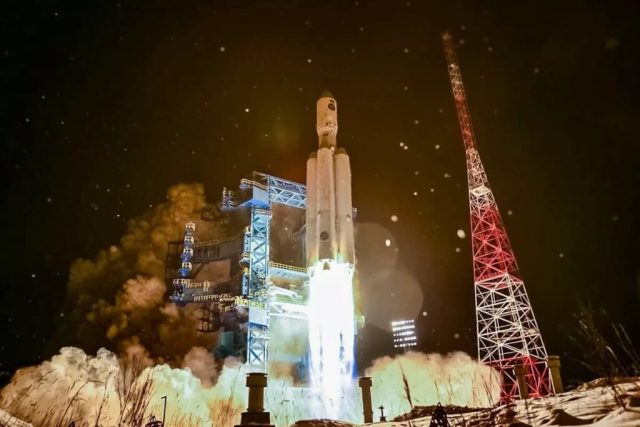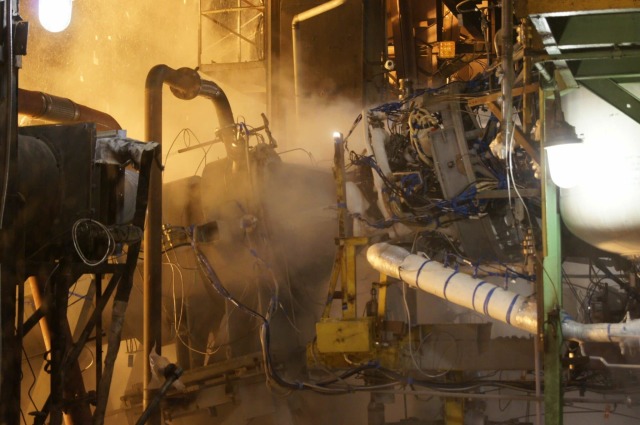A fire test of the RD-0146D1 oxygen-hydrogen engine was conducted on the territory of the Voronezh Rocket Engine Building Center. It is being created for the KVTK upper stage, which will be used on the Angara-A5 heavy class rocket.
The firing test of the RD-0146D1 oxygen-hydrogen engine took place at the test stand of the Voronezh Rocket Engine Building Center. This was reported in Roscosmos.
The engine worked at the specified modes in accordance with the testing program. Successful tests have confirmed the correctness of the design and technological solutions laid down at this stage.

RD-0146D1 tests
Image source: roscosmos
RD-0146D1 has a thrust of nine tons. It became one of the modifications of the RD-0146, developed by the Chemical Automation Design Bureau. We are talking about liquid rocket engines made according to an independent two-shaft scheme for supplying fuel components with sequential gas supply to turbines. The concept provides high reliability, especially with multiple inclusions.
Tests RD-0146D1 / ©roscosmos
In the design of RD-0146, electroplasma ignition, finning of the firing wall of the chamber and ball start-shut-off valves were used. The engine was created using the most modern titanium and aluminum alloys.
In comparison with the previous version of the oxygen-hydrogen engine for the Angara-A5 upper stage, the new one was boosted by 20 percent in thrust.
Special attention has been focused on the "Angara-A5" lately. Recall that on December 27, at 22:00 Moscow time, the third launch in the history of the rocket took place. As during the previous test launches, the payload was a large-scale mock-up of the spacecraft.

Launch of Angara-A5 from Plesetsk
Image source: Roscosmos
Later, the media reported on the problems due to which the Perseus upper stage could not bring the mock-up of the satellite into geostationary orbit. Experts expect the block to descend from a low reference orbit and collapse within the next month
The Angara-A5 was the first heavy launch vehicle developed in Russia after the collapse of the USSR. The first launch took place on December 23, 2014. The second was on December 14 last year. In the future, the rocket will replace Proton-M, which uses unsafe asymmetric dimethylhydrazine (heptyl) as fuel.
In addition to the Angara family, Russia is also creating other carriers. The most important of them can be called "Soyuz-5", also known as "Irtysh". The completion of the preliminary design of the rocket became known this month. It will be able to launch a payload weighing up to 17 tons into low Earth orbit.

